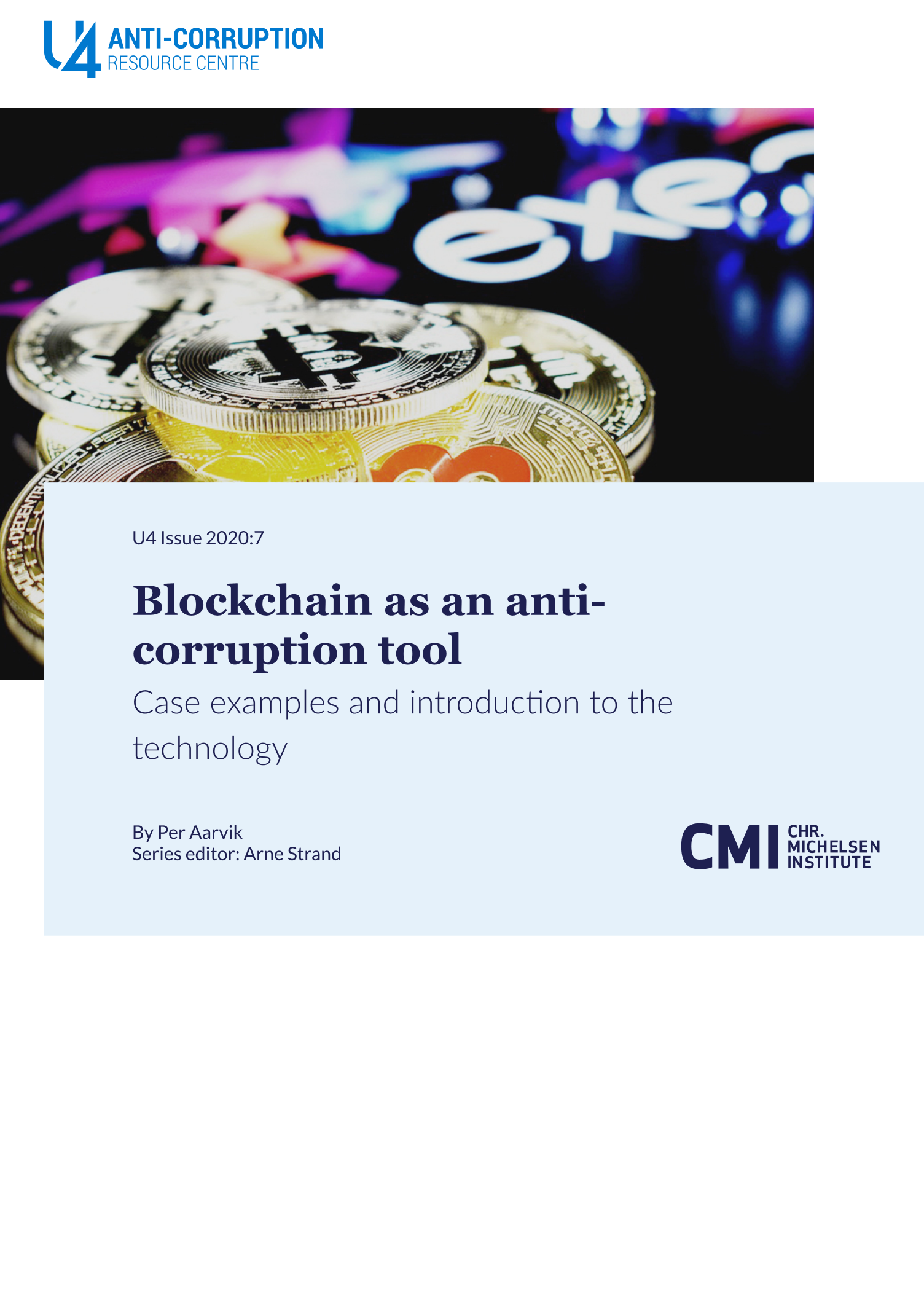Main points
- Blockchain has the potential to be a game changer in anti-corruption efforts. Whether it is successful or not largely depends on contextual elements – infrastructures, legal systems, social or political settings – rather than on the technology itself.
- Implementation of blockchain technologies in governance affects fundamental aspects of society, such as trust in institutions, identity, transparency, and data and privacy protection.
- A blockchain is designed to operate in environments where trust in data/code is greater than trust in individuals or institutions.
- Records entered in the blockchain are transparent and immutable. Because of these features, there may be conflicts with individual rights such as the right to privacy or the right to be forgotten, as described in the European Union General Data Protection Regulation (GDPR).
- When blockchains hold registries of physical items, trusted gatekeepers have to ensure that the physical reality and digital information correspond.
- Digital infrastructure, governing regulations, and digital literacy should be in place before blockchain-enabled registries are rolled out, particularly in developing countries.
- Decision makers should have an understanding of the technology before deciding on whether or not it is appropriate.
